The Mystery Meat | Interview | ‘Profiles’ | “A Garage Rock Monster”
1960s Blackburn students that formed The Mystery Meat recorded one of the most sought after garage rock albums in 1968.
The album was a complete labor of love with DIY ethic, this band consisted of Wayne Joplin, Ronald O’Dell, Richard Howard Leighninger, S. Gary Walden and Robert Rentz. Their 1968 self-released album, ‘Profiles’ is considered as a “Holy Grail” among garage rock collectors. Recorded in a true DIY fashion, the band only played one single gig and disappeared until much later when collectors found the original copy of the album. According to Leighninger, only 100 copies were pressed.
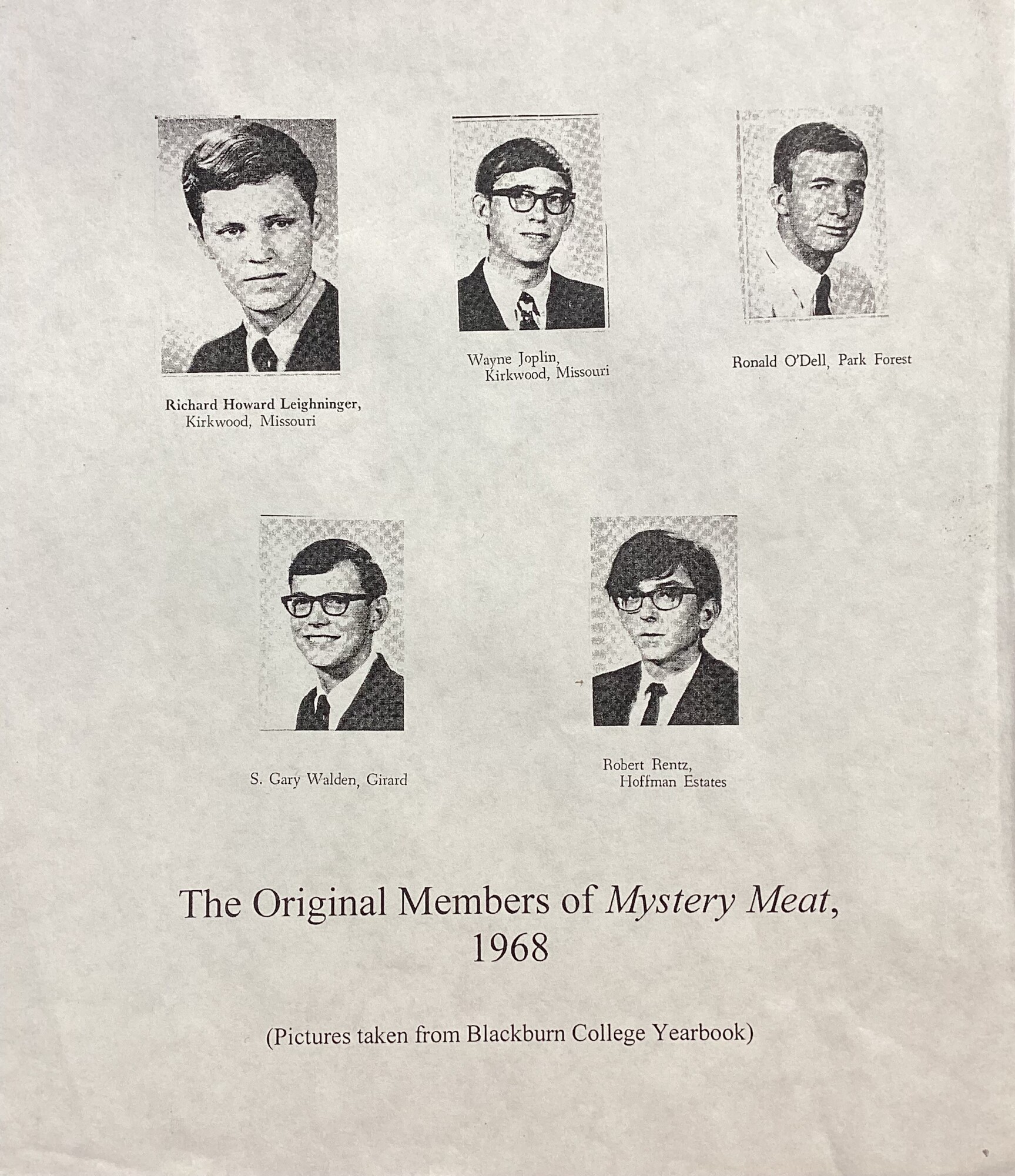
Did you ever expect that we will be talking about your album from 1968 in 2023. The band’s album became a cult classic. How do you feel about that?
Richard Howard [Dick] Leighninger: No, I never thought I would be talking in 2023 about an album I helped produce in 1968. Likewise, I was surprised in 2002 when someone called me to say our album was for sale on eBay for $1,500!
Are you all coming from Illinois? Tell us where and when were you born and where did you grow up?
At the time of the album, my family was living in Kirkwood, Missouri. My father worked for a large insurance company, and we got transferred every 6-7 years as he climbed the corporate ladder. I was born in Youngstown, Ohio, and lived in Indianapolis, Indiana, Cincinnati, Ohio, and Kirkwood, Missouri. I went to Elementary School in Cincinnati, and junior and senior high school in Kirkwood, graduating in 1964.
Wayne Joplin was also from Kirkwood, Missouri. The other three band members were from towns in Illinois. Steve Oberman came from Washington, D.C. While most students were from Illinois, we had about 20% from other states and foreign countries, so we had a fairly diverse student body. Cost of attendance was an attractive enticement.
What was growing up for you like? Did you have a certain place where you hangout with your friends, listening to the latest songs?
I grew up listening to my father’s 1940’s band albums, and typical rock music on the car radio in the ‘60’s. I have two brothers, the older of whom had an interest in history, and have good memories of weekend trips in the family car visiting historic sites in Ohio.
Life in the early 60s was very different from what it’s like today. How do you see it from today’s point of view?
What I remember most about the sixties is watching sit-com TV, while eating TV dinners off metal trays in the living room. After I got a driver’s license, I hung out with friends, including boy scout meetings. I hated high school because it was so huge. My Senior Class at Kirkwood high school had 800 students in it. Having been born in 1946, we were on the front line of the baby boom which is why school classes were so large. I couldn’t wait to leave that place.
Were you or any other members of The Mystery Meat in any other local bands? If so, what was the name of it and what did your repertoire look like?
While I sang in a boy’s choir in high school, I had no band experience until my senior year in college. While Wayne Joplin, one of the song writers in The Mystery Meat attended my high school, he was a year behind me, so had no idea who he was. Again, one of the disadvantages of attending a very large school. I didn’t know much about the musical background of my band mates, except I know Wayne and Ron O’Dell, the other song writer, had a small band named “Shane”.
How did you originally meet?
We met at Blackburn College while students. Blackburn had a small enrollment of 500, which allowed me to meet and know students in other classes. I was a senior; the others were underclassmen. As I remember, Wayne Joplin and Ron O’Dell approached me, asking me to sing vocals in their new group. They had songs they’d written from poems they both did for college English classes. They asked me because I had been part of the Blackburn College Choir and had sung with two quartets singing folk and popular songs off-campus in my earlier college career.
When did you form and what was the original idea behind the formation of the band?
We formed in 1967-68. Wayne Joplin and Ron O’Dell wanted to press a record, something I had no experience with, but it sounded like fun. My colleagues in the folk quartet had graduated, so I was otherwise “musically available.”
You had a very unique band name, how did that come about?
After we’d completed our recording, we asked ourselves what we should use as a band name. Actually, we had twelve songs, which we didn’t think had any particular style. In our college cafeteria, where we ate all our meals, they typically served us a veal cutlet. The leftovers from Monday were returned to the walk-in, reheated and served Tuesday and Wednesday, each day with a different gravy, to disguise its origin. We called it “mystery meat.” Since we, as a group, were not really sure what kind of album we’d made, the name “Mystery Meat,” seemed appropriate.
Tell us about your instruments and gear you had in the band.
We had two guitars, one drum set, and a Farfisa organ. The recording was done on a reel-to-reel tape recorder. The equipment was owned by another classmate, George Saunders, and Steve Oberman, our sound technician, operated the equipment.
“The Mystery Meat had ONE performance, on the stage in the college’s gymnasium”
Did you do a lot of shows before going to the studio to record ‘Profiles’? What are some of the bands you shared stages with and what are some of the places you played back then?
The Mystery Meat had ONE performance, on the stage in the college’s gymnasium. Since we were essentially penniless college students, we could not afford a studio. In fact, in a small town of 5,200 in Central Illinois, I doubt there was a studio in town to be rented. We were 60 miles away from Springfield, Illinois and 90 miles away from St. Louis, Missouri. Our “studio” was the unfinished basement of Ludlum Hall, the college’s new administration building. All we had was lights, a staircase, and four blank cinder block walls…which undoubtedly contributed to the garage band sound. Because we were all full-time students, and had jobs in the college’s mandatory work program, we only had time to practice at night. (More on the college’s work-study program later).
Did you perhaps record any other single or anything else besides the album?
There were no other songs recorded.
Is the album ‘Profiles’ a self-release? How many copies and where did you press it?
The album is a self-release. One of our members, Wayne Joplin, had helped record a high school choir on a local RCA subsidiary in St. Louis, and offered to send our tapes there for making a vinyl record. My younger brother, Jim Leighninger, designed the cover, which the record company graciously printed for us. I am not sure the number of albums we pressed, but the consensus is 100. We sold them for $3 at our student union, and for $5 if we had to mail it. There is no record of the money collected, but whatever it was, it went to Wayne Joplin because he funded the job from his own pocket.
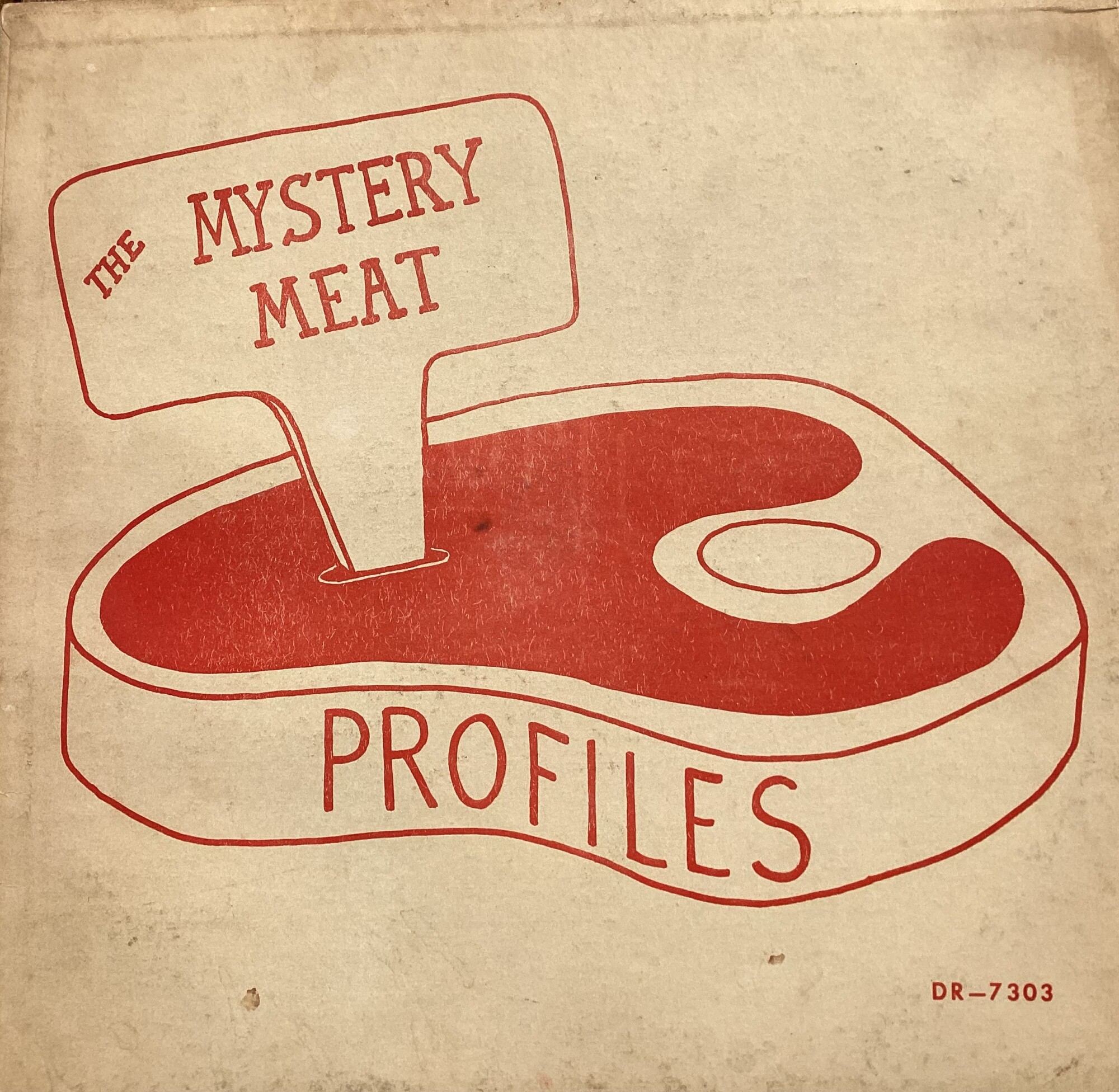
Did you send any of the records to labels or radio stations? Did you get any airplay or offers? Did you also sell them at shows?
We made no attempt to market the album to radio stations. Having completed the album, satisfied our ambitions. Besides, with the Vietnam war raging, we knew most of us had no future anywhere but the military. When I graduated, I lost my in-school deferment, and was pretty sure within six months I would get my induction letter from Uncle Sam. No businesses would hire a male in 1968 without checking his draft status. If you were classified 1-A, like I was after losing my deferment, no business would spend the time training you. The only way to maintain a military deferment was to become a school teacher, which was something I had no interest in. We made the album to have fun, and….the project ended. End of story….or so we thought.
I need to further explain how the Vietnam war shadowed our college life. Between August, 1964 to 1975, when the war ended, it was impossible for a healthy male to plan for a career after college. While enrolled, we were given in-school deferments from the military. During my sophomore year, I had to take a standardized test to prove I was qualified to be enrolled in college. If you flunked out, or failed to re-enroll, your Draft Board was notified and within 6 months, a letter telling you had been drafted into the military was sent. The only other way to avoid the draft was to be employed as a school teacher, work for some kind of defense industry or join the Peace Corps. If you had a medical complication like bad eyesight, hearing loss, or similar situations, you were eligible for a medical deferment. You had to have extensive documentation to qualify. I was able to squeeze myself into an Army Reserve unit, where I served for six years, with monthly drills and two-week summer camps. Steve Oberman had a legitimate medical deferment. The others in the group became school teachers. You can see why I never contemplated a career in the music industry. A year after I graduated and enlisted in the Army Reserve, a draft lottery plan was put in place allowing a number of males to avoid military induction. 365 birthdates were loaded into the lottery drum, and about 51% (?) of those with birthdays drawn each year, were drafted.
Blackburn College is a small, private liberal arts college with a mandatory work program to lower costs. If you lived on-campus, you were required to work 15 hours a week, while carrying at least 15 academic hours per semester of classes. In the mid-60’s, a private college in Illinois or Missouri, cost $5,000 to $6,000 a year for tuition, fees, room and board. Blackburn charged $1,000 a year, which is about what a public university charged. The work program replaced our room and board charges. There were two men in the kitchen who planned the menus and purchased the food, but it was students who cooked the meals, served it and washed the dishes. The food was plentiful, but nothing like a four-star restaurant, hence the veal cutlet. We had a campus maintenance crew who fixed the toilets, shoveled snow and replaced light bulbs. We had a laundry, and a manual switchboard for the campus. Students worked as office secretaries and faculty assistants. A crew kept the boiler which heated most of our buildings heated, and we had a construction crew who actually built some of the buildings on campus. Although we had a faculty advisor, the work program was run by students, elected every year by the student body. My senior year, I was elected Men’s Work Manager. In the mid-sixties, we were old-fashioned with job placement gender-wise. Only women worked the switchboard and laundry, and only men worked new construction or campus maintenance. We also had a Womens’ Work Manager. This was changed a few years after I graduated.
Women students had to be checked into their dormitories by 10:00 PM. There was no curfew for male students. We were not allowed to have cars on campus; only off-campus students were allowed cars. There were no laundromats on campus, so every Saturday afternoon we’d walk into town to do our laundry or use the grocery stores to buy instant coffee or snacks for our rooms. This was before microwaves, and the only television was in the dormitory lounge. If you needed to make a phone call, you had to use the coin operated phone in the lobby. (Chocolate milk shakes were available in our student Union for $.25!).
Downtown was about 10 blocks away. The guys usually walked into town on Saturday nights to frequent the bars. Six days a week we had 7 AM classes. In order to get further off-campus, we befriended commuting students, with cars, who could take us to Springfield, Illinois, the closest large city.
As you can see, the Blackburn campus was our only “world,” which restricted our lives, and I hope gives you an idea about the influences we had on the production of our album. As the Men’s Work Manager, I had keys to the administration building, allowing us to set up our “studio” in the basement. While the top two floors were occupied with offices, no one was there during the night, which allowed us to make noise in the basement.
How many hours did you spend in the studio?
We probably spent 3-4 evenings a week in the Spring of 1968 doing the recording.
Please share your recollections of the sessions. What were the influences and inspirations for the songs recorded?
I honestly do not remember any impressions doing the recording. I don’t remember using any sheet music, except printed lyrics. Wayne Joplin and or Ron O’Dell would sing the part, and my job was to copy what they presented to me. I may have added some musical enhancements of my own. Wayne and Ron provided the impressions with their music and lyrics. I was just one of the musical instruments.
According to the album jacket, these individuals or bands influenced my fellow band members’ music: Neil Young, The Kuban Sound, John Lennon, George Harrison, Harvey Mandel, Felix Cavaliere, Ringo Starr and Jack White.
I have not listened to the album in years, so cannot add any insight to the tracks. During this period, I had a girlfriend named “Sue,” so you may hear some feelings for her in the song entitled ‘Girl Named Sue’.
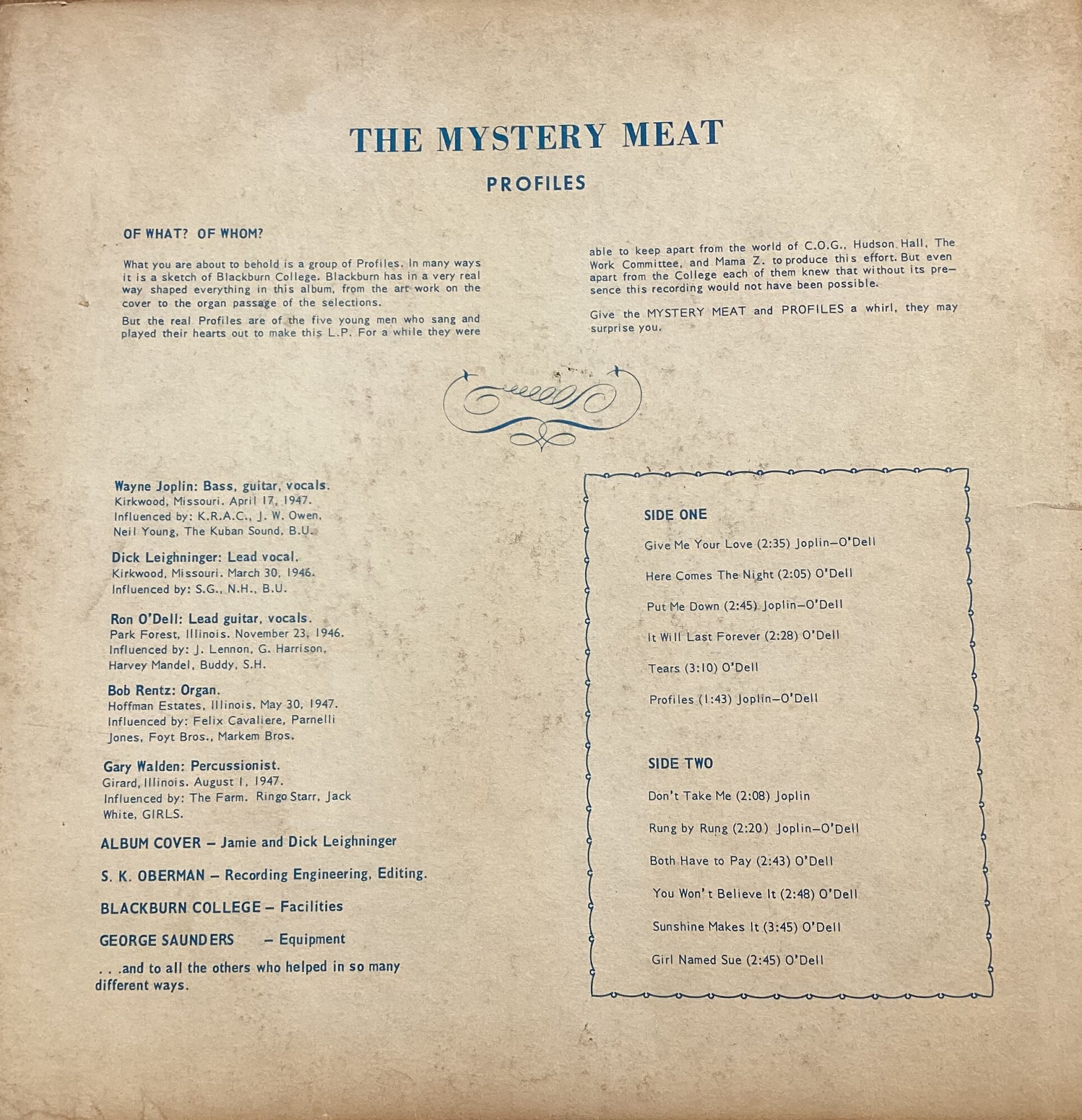
As you were living in the 60s, did you ever experimented with psychedelics?
I never played with psychedelics other than cigarettes and boiler-makers in the bar. If we had such things on campus I was not aware. Remember, none of us had a lot of discretionary resources. But I can’t speak for other band members.
What would be the craziest story that happened to the band?
The craziest thing that happened to the band occurred in 2002, when I found out our album was for sale on eBay. It seems that after our albums were sold, audio recordings of the album were circulated amongst the garage band community and it became very popular. The problem was no one had ever seen the album, so no one could verify its origin or authenticity. There was at least one group who claimed the work was theirs, but they could not produce a copy of the album.
Then…a copy of the album was discovered in a yard sale in Peoria, Illinois. The seller claimed she was a Blackburn graduate and her boyfriend had given the album to her. She however had a contact who was a garage band freak, who knew the legend, and put it on eBay to sell. When I first learned about it, the asking price was $1,500. Since my name was the most distinctive on the album jacket, I started getting calls from all over the world, asking to buy a copy. At the time, I had two; one I kept and one I gave to my parents. The owner of a local music store, Electric Fetus, knocked on my door asking to buy a copy. Since the eBay sale was still in action, I dismissed him saying I would not sell until I knew how much it sold for on the internet. I got a call from someone in Austria, who offered me $3,000 for a copy. But he wanted to hear it first before he sent the money. Luckily I had just got the stylus fixed on my turntable, so I played the album, holding the telephone receiver to the speaker. All 12 cuts. Long-distance, to Austria. He agreed to buy it and I mailed it to him overseas.
I was also contacted by a record producer in Germany, who wanted to buy the rights to the album to reproduce it in vinyl. He offered $5,000 (Shadoks Music). I tried to contact as many members of the band that I could, with 34 years elapsing since I’d seen any of them. I found three of them, and they all agreed to give it a shot. I had an attorney friend write a sales contract saying that we agreed to sell him the rights, “to the extent that we owned them”. He agreed, sent us the money, and about 15 copies of the re-copied album. I do not know how many albums he recreated, but he used the same cover, so the reproduction looks just like the original. Buyer beware. Since I was unable to dig up one of the song writers and our organist, I donated their share of our earnings to the operating fund of Blackburn College.
When did the band stop playing together? What happened after the band stopped?
As stated above, the band ceased to exist after I graduated in 1968. Since both Steve Oberman and Wayne Joplin lived in or near Carlinville, I would occasionally run into them in town or at college reunions. Unfortunately, we lost Wayne Joplin a few years ago to cancer.
Looking back, what was the highlight of your time in the band?
The highlight for me was actually seeing a vinyl copy of our music produced. As stated before, I really can’t remember the songs since I haven’t played the album in years. Frankly, I was never very proud of my performance, and am amazed at the nice compliments I subsequently received in reviews.
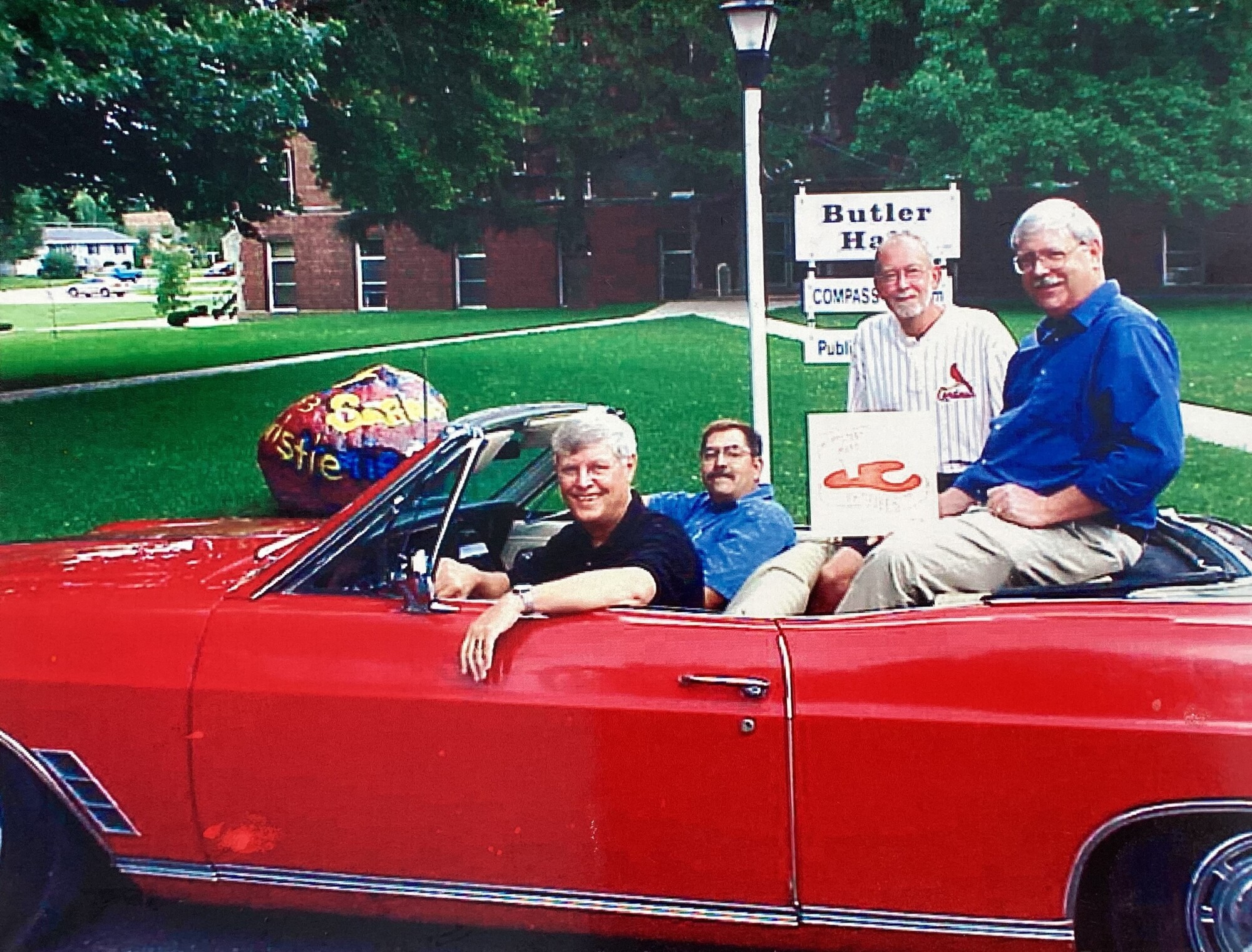
What currently occupies your life?
I retired from a career in higher education administration a few years ago. I’m 77 years old. But two of my hobbies are working on the rebuilding of WWII aircraft with the Minnesota Wing of the Commemorative Air Force, and working with the Minnesota Triumph Sports Car Club. I did also spend about seven years singing with the Minnesota North Star Barbershop Chorus, but quit in 1984 when our first child arrived.
Given that 55 years have elapsed since we created this album, I have done the best I can to answer these questions as accurately as I can. While I may have forgotten a few facts, I hope the readers understand. I also hope they appreciate the effort that went into the production of this piece. At the time, I can assure you that we never imagined that we were creating a garage band “masterpiece.” I’m glad you enjoy “Mystery Meat”.
Klemen Breznikar
Headline photo: The only surviving photo of The Mystery Meat performing at their only gig in 1968 at Blackburn College Gymnasium.

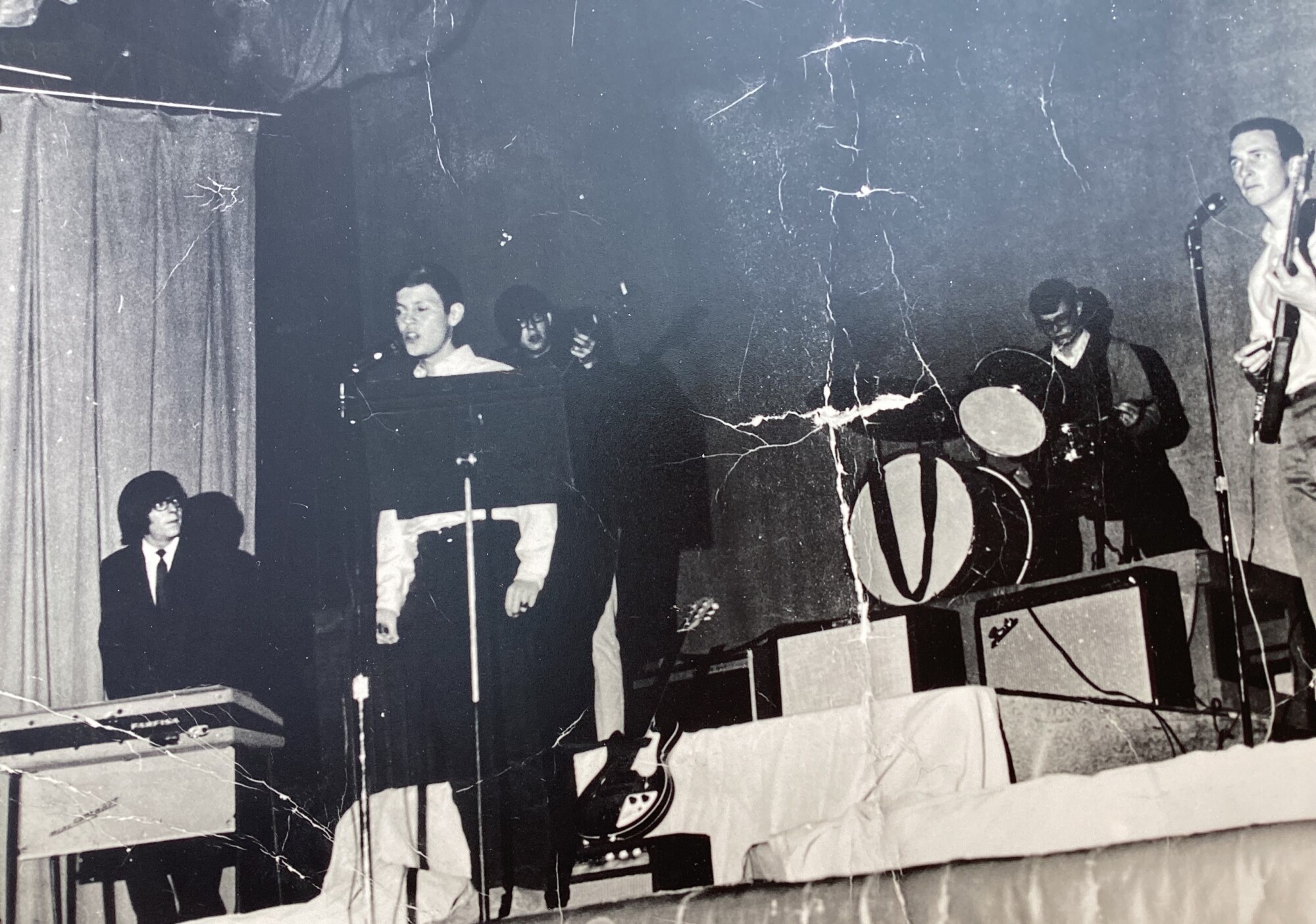
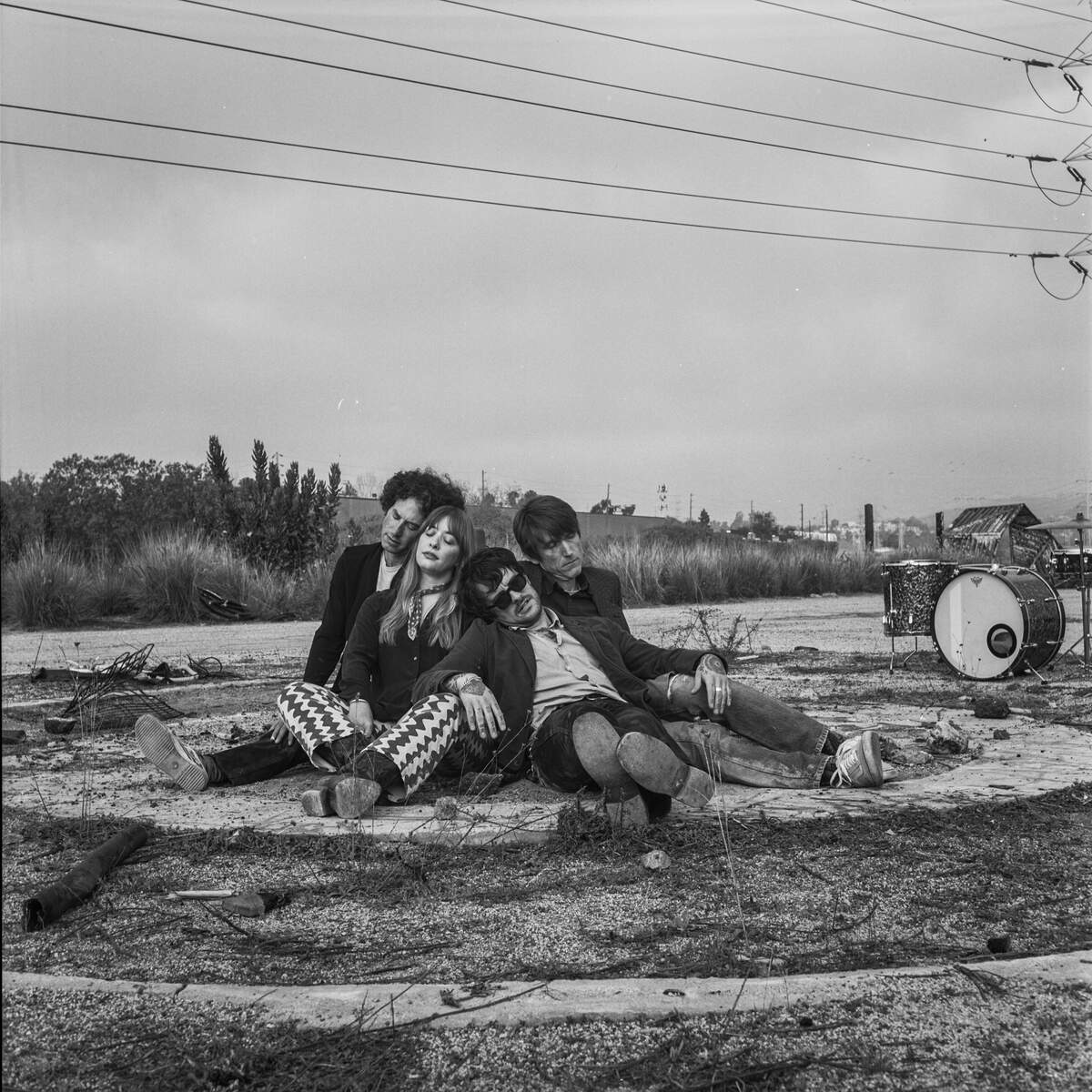
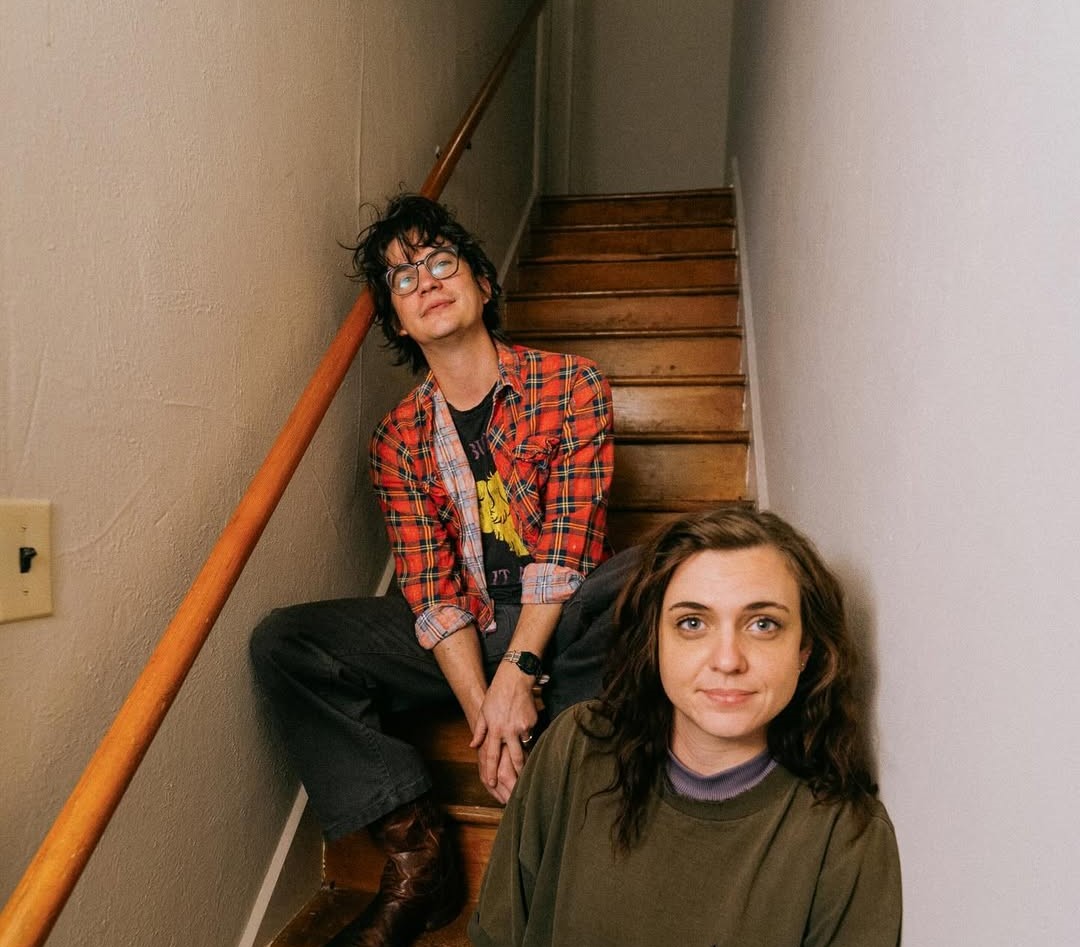
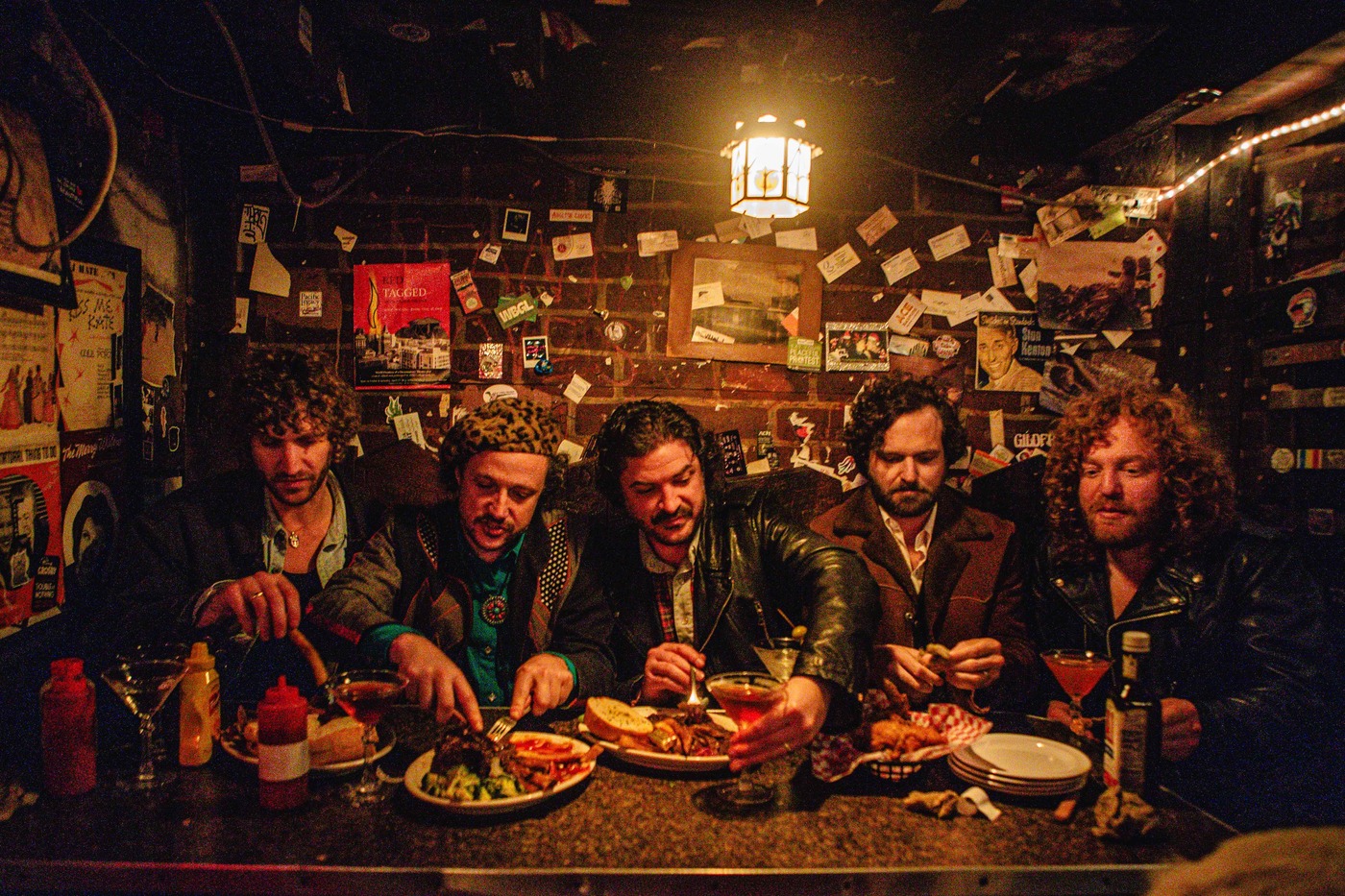
That 2002 auction was crazy. I was the winner of that copy, but all the contacts happened before the auction was even over. It would have been great to have been the one to have made the initial contact as the new owner, but I was happy to have gotten a copy after owning a partial tape of the record for about 15 years.
Of all the albums that fall into the genre of garage sounds turning toward psych (this, Bachs, Summer Sounds, All of Thus, etc.), MM is still by far my favorite.